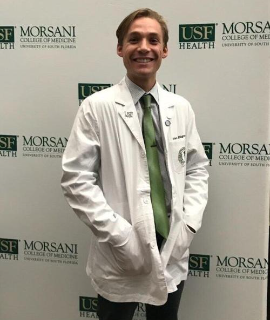Title : Kaposi Sarcoma Associated Immune Reconstitution Inflammatory Syndrome (Ks-Iris) – Recognition And Treatment In The Age of Advancing Antiretroviral Therapy
Abstract:
Introduction
Highly active antiretroviral therapy (HAART) has substantially reduced the prevalence of Kaposi Sarcoma (KS),1,2 yet its effectivity has rendered a new phenomenon, KS-IRIS, a serious condition where patients experience paradoxical worsening after HAART initiation that can lead to rapidly progressive papulonodular skin lesions, visceral organ involvement, respiratory distress, and death.3 Approximately 50 cases of KS-IRIS have been previously reported,4-7 highlighting the uncommon nature of the syndrome. However, considering how rapidly progressive and fatal the syndrome is, early recognition and management is critical.
Case Report
Our patient was a 35 year old white male with HIV diagnosed in 2019 who initially presented to an outpatient infectious disease clinic with a two month history of worsening violaceous rash on his neck, fatigue, night sweats, lymphadenopathy, lower extremity swelling, chronic watery diarrhea, and weight loss in the setting of HAART non-compliance for the past ten months. After evaluation and biopsy of the lesions (positive for KS), the patient was started on Bictegravir/emtricitabine/tenofavir alafenamide 50/200/25 and advised for close follow up. He returned two weeks later with worsening rash that had extended with greater than 20 lesions, diffuse shotty axillary, cervical, and inguinal lymphadenopathy, and severe watery stools concerning for KS-IRIS.
The patient was subsequently admitted for observation and initiation of liposomal doxorubicin chemotherapy. Labs on admission showed a CD4 count of 139 cells/mm3 with a viral load of 128 copies/mL. CTAP showed diffuse lymph node enlargement, hepatosplenomegaly, and lymph node biopsy results were positive for KS. During the course of his staging, the patient’s clinical status significantly improved with reduction in the number of lesions, resolution of his diarrhea, and gradual reduction in hepatosplenomegaly on daily examination. Given the patient’s KS-IRIS resolved and his biopsy results were negative for lymphoma, the decision was made not to pursue chemotherapy, and he was discharged on day five with HAART and close follow up.
Discussion
KS is generally seen with HAART non-compliance (in our patient’s case) or undiagnosed HIV/AIDS. There was a glaring temporal association with the re-initiation of HAART and the rapid worsening of our patient’s disease burden, which raised initial concerns for IRIS. Kitahada et al analyzed a cohort of patients that present with AIDS defining opportunistic infections and found an overall 11% incidence of IRIS after initiating HAART, with a 16% incidence of KS-IRIS.7 Often chemotherapeutic agents are used for KS-IRIS in patients with significant tumor burden, with the most common being liposomal doxorubicin8, however other therapies include etoposide9, bleomycin10, or vincristine11, yet these regiments have had difficulty showing a consistent difference in mortality12. In the case of our patient, we decided to monitor the course of his condition before starting chemotherapy since he showed significant clinical improvement over the course of a few days.
Conclusion
Physicians must keep a high degree of suspicion for IRIS in the treatment naïve or re-initiators, specifically patients with a baseline opportunistic infection, in order to reduce morbidity and mortality with shared patient decision making about chemotherapy use considering tumor stage, disease burden, and prognosis.


